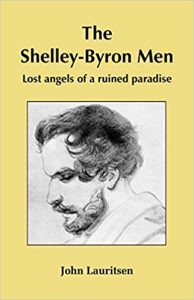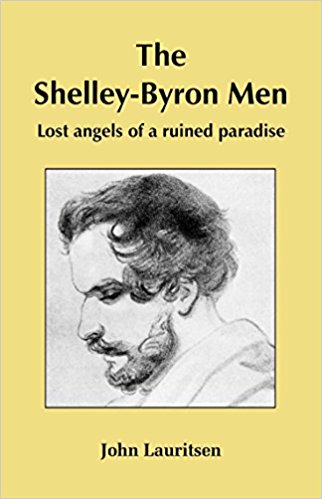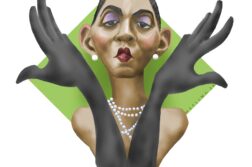 The Shelley-Byron Men: Lost Angels of a Ruined Paradise
The Shelley-Byron Men: Lost Angels of a Ruined Paradise
by John Lauritsen
Pagan Press. 192 pages, $16.
ONE STRIKING ASPECT of this book is the author’s animus toward the literary executors and biographers of the Romantic poets Shelley and Byron. John Lauritsen is correct that until the early 1980s most academics and biographers resisted acknowledging “homoeroticism in the works and lives of canonized authors.” This resistance is now more historical artifact than ongoing force. Not so for Lauritsen, an independent scholar who has published many books on topics ranging from AIDS to the Romantic poets. He writes as though Shelley’s wife Mary and daughter-in-law Jane were still threatening to silence anyone who questioned the pious legend they created around the poet, who died in 1822 at age 29. The author’s attitude toward women in general, not just Mary and Jane, which borders on misogyny, undermines his credibility.
The book, which originated as a talk, is half text, half appendices containing excerpts from works by various writers. Despite the cobbled-together quality of the book, its thesis is sound for the most part. The “men” referred to in the title are Thomas Medwin, Shelley’s second cousin, who introduced two of his young friends, Edward Williams and Edward John Trelawney, to the poet, then living in Italy. Early in 1822, Byron, at the height of his fame, moved to Italy to be near Shelley. For six months, these five men lived near each other in Pisa. Lauritsen contends that they “were drawn together by sexual affinities, that they discussed male love, and endeavored to liberate it.”
The interlude ended when Shelley, Williams, and a young sailor drowned at sea in July 1822. Byron would be dead by 1824. Lauritsen expands the group to include two additional friends of Shelley, Thomas Love Peacock, the executor of his will, and Thomas Hogg, the author of the first biography of the poet. Both faced the wrath of the protectors of the poet’s reputation when they brought up Shelley’s relationships with men.
Unquestionably, the families and biographers of Shelley and Byron bowdlerized their works and suppressed aspects of their lives after they died. However, this suppression concerned their scandalous relationships with women as much as with men. Shelley abandoned his first wife to live with another woman, and Byron was rumored to have had an incestuous relationship with his half-sister. There is ample evidence that Byron had sexual liaisons with adolescent boys while a student. To prove that these five men, all of whom married women and had children, were at least bisexual, Lauritsen does not rely on biographical evidence but upon textual analysis of their writing, particularly poems and correspondence. This is the most convincing part of the book. His discussions of coded references and instances of “camp” in their writing are particularly astute. Clearly these men had powerful emotional attachments to each other, and both Shelley and Byron, with their affinity for ancient Greece, alluded to sexual acts between men in their poetry.
The book falters in proving that the members of this circle had sexual relationships with one another, or that they talked among themselves about male love and its “emancipation”—precursors of the gay liberation movement. “Of course they did” is all Lauritsen offers as proof of the latter. His analysis of one poem with possible gay implications ends with this wishful statement: “In my imagination, Shelley fell head over heels in love with Williams and concluded Epipsychidion in a burst of inspiration.”
John Lauritsen has had a long career as a gay activist and scholar. Despite his occasional desire to see more than the evidence supports, he reminds us in this book that the emancipation of canonical literary figures from homophobia does not happen by accident. Many scholars, both gay and straight, have worked for years to make it come about.
________________________________________________________
Daniel A. Burr, who lives in Covington, Kentucky, is a frequent contributor to this magazine.






